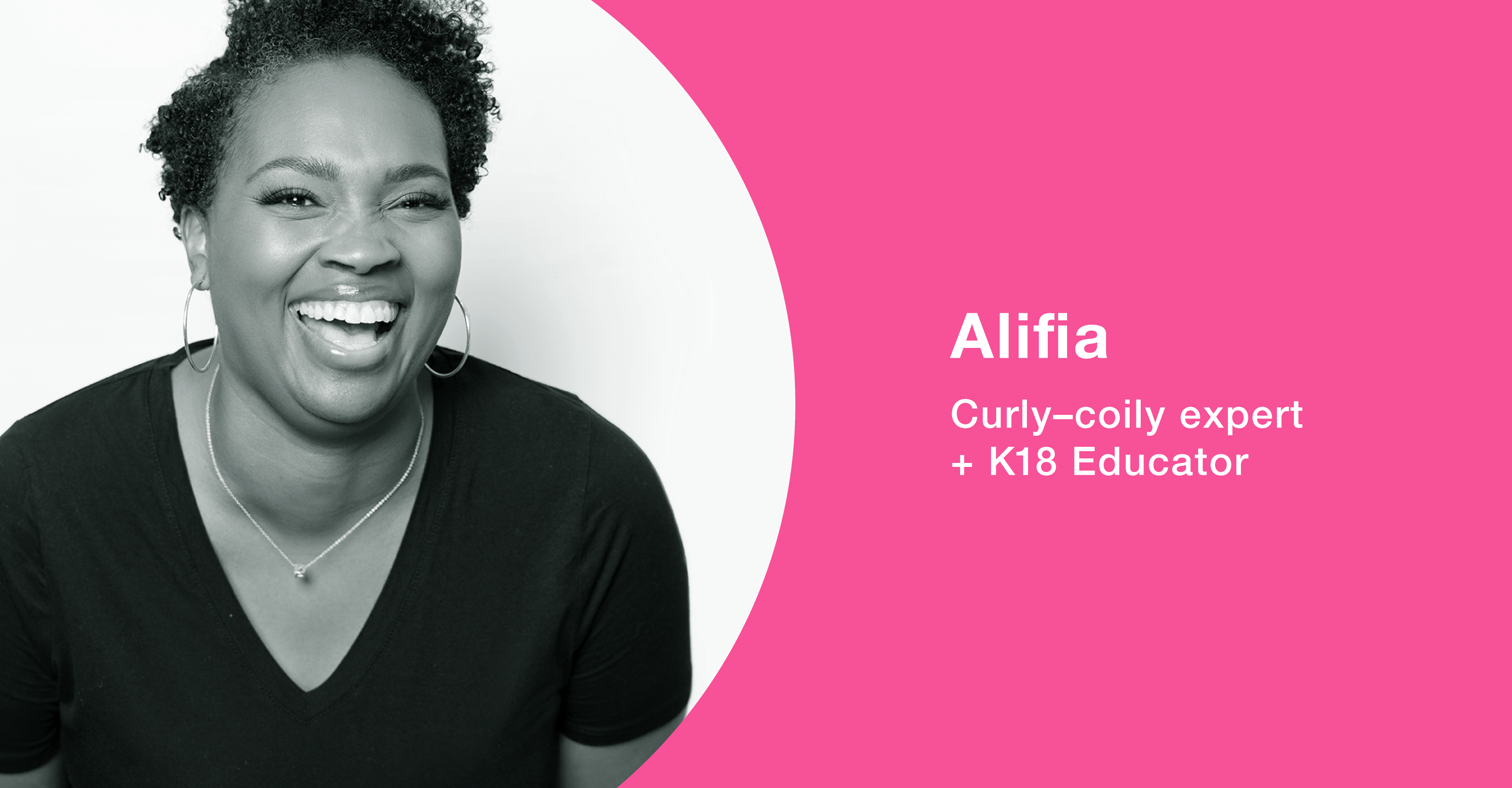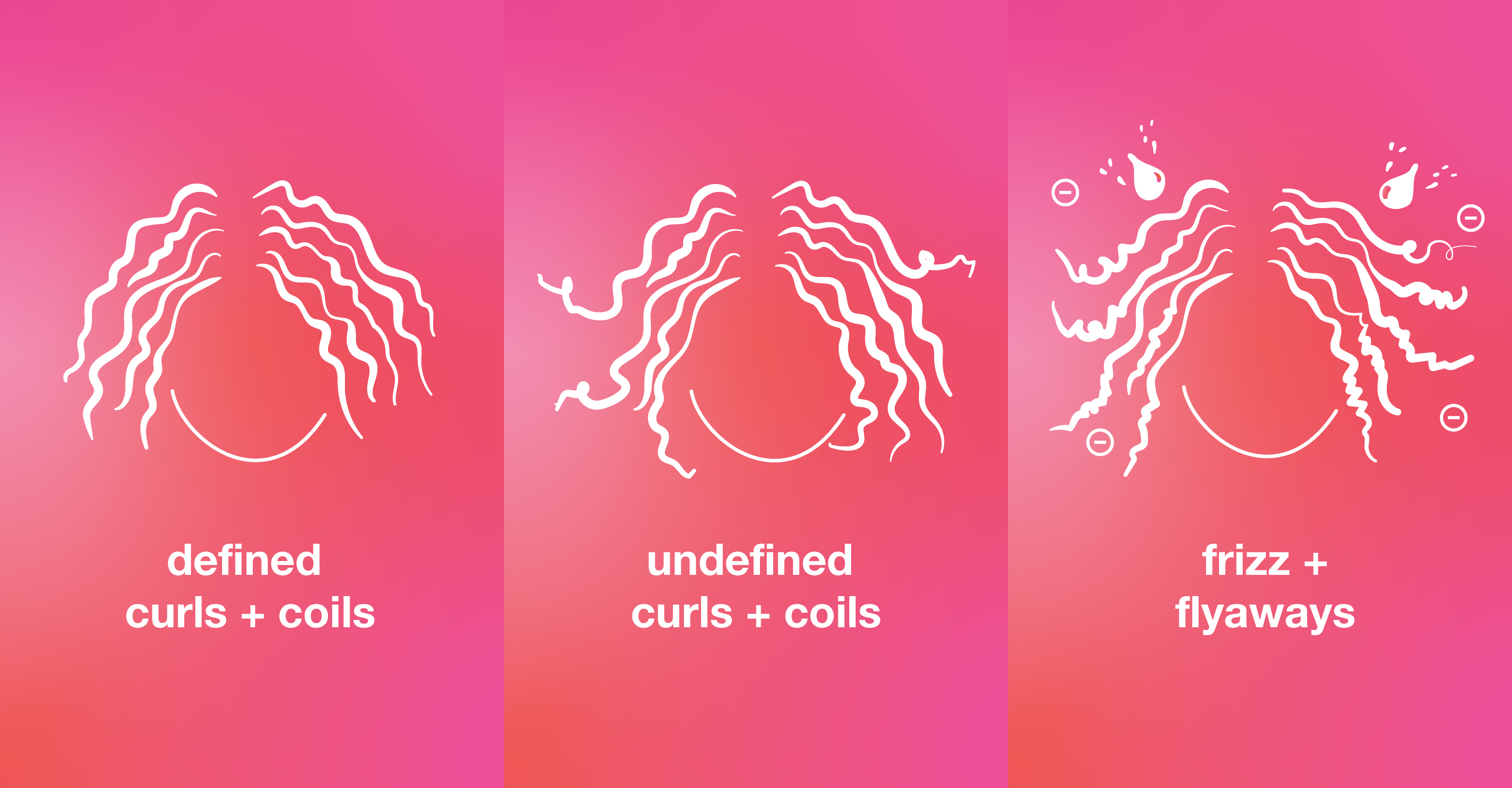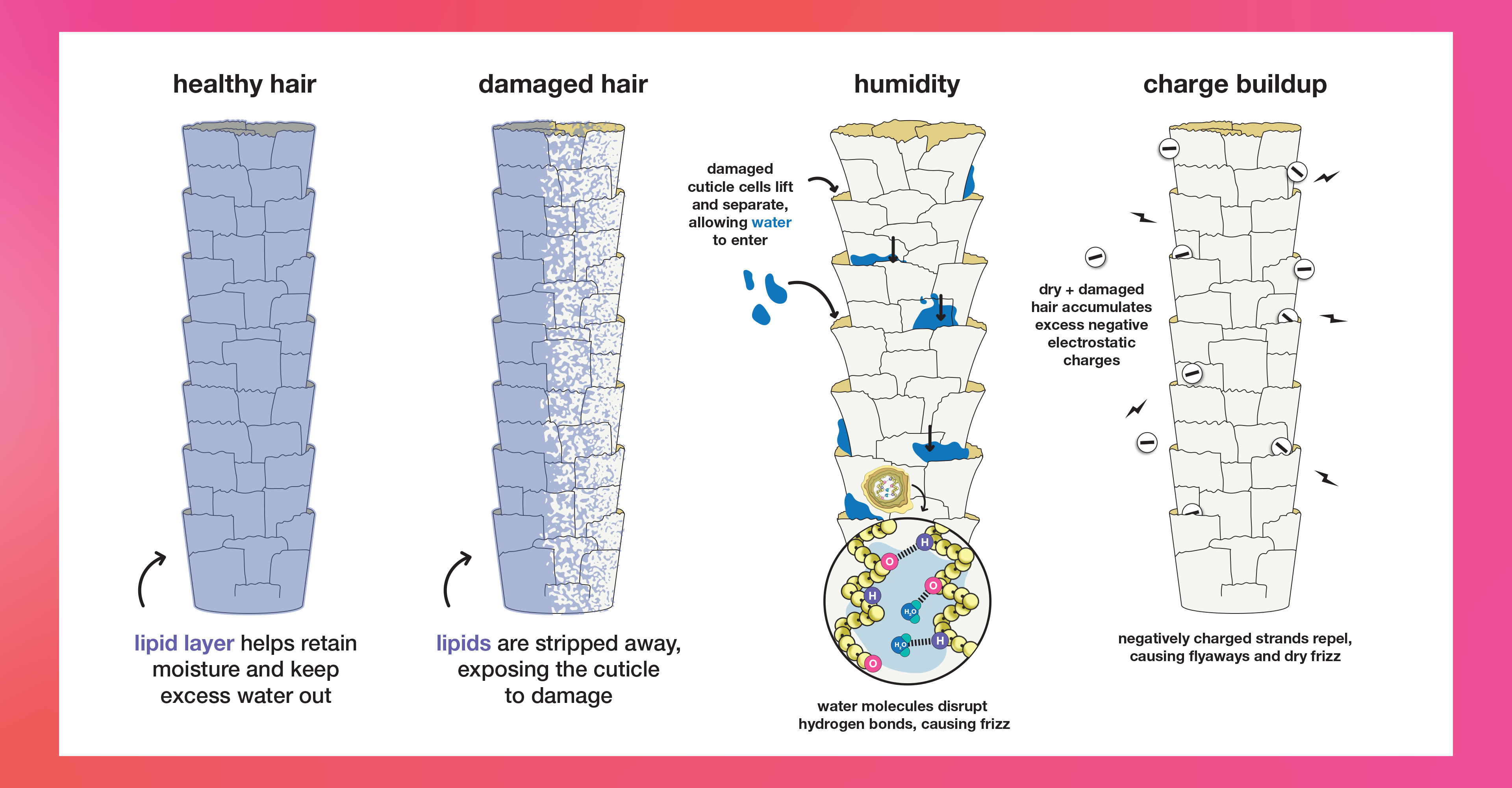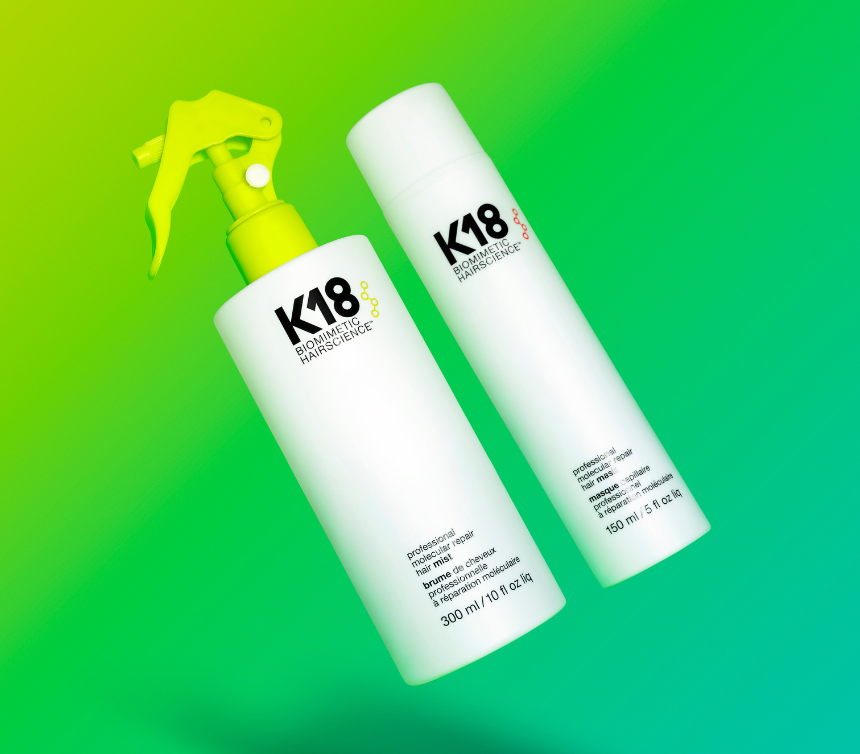Identifying and fighting frizz with PRO expert, Alifia

Frizz gets a bad rap, especially in the curly–coily hair world. Whether your client’s unique texture was compared to unrealistic beauty standards, or there was pressure to fit in with damaging chemical straighteners—frizz makes people feel some type of way.
Contrary to popular belief, frizz is not always a bad thing—it might even be by design.
not all frizz is created equal
Humidity isn’t the only thing to blame for frizz (looking at you, Florida). It can come from natural hair’s texture or shape, or environmental factors that are worsened by damage. Here’s what we mean…

Frizz from natural texture and shape happens when strands aren’t in formation with the rest of the curls and coils. They break free from the crowd and stand on their own, creating a soft halo around your client’s crown—a one-of-a-kind accessory. Sometimes I create it on purpose, using a hair pick to shape their hair to new heights. Embracing these voluminous, less-defined locks are one of the many modes of curly–coily expression.
Then there’s not-so-intentional frizz. What I like to call “wet frizz” in humid environments. Hair picks up water molecules in the environment, which causes different points along the hair fibers to swell unevenly. This changes the shape of the hair, straying away from the patterns we expect.
So avoid humid environments and you’re good…right? Well, frizz can happen in dry environments too, from charge buildup. You see, hair naturally carries a negative charge. In cold, dry climates, like charges repel and push strands away from each other. This is what we call “dry frizz” or staticky flyaways.

If looking out for wet and dry frizz wasn’t enough, damaged curls + coils are more vulnerable to it. Things in every routine like heat styling, brushing, and UV rays can wear down the outer protective layers of hair, allowing more water absorption, and thus—wet frizz. Dry and damaged hair accumulates excess negative electrostatic charges, causing even more dry frizz or flyaways. You can get a deeper dive into the science here!
how to fight frizz, for good
Understanding the root causes of frizz helps us fight the not-so-intentional kinds of frizz + and strengthen hair’s defenses against it. Here are my tips for fighting frizz in the salon, and in your client’s routine at home:
Reinforce hair’s natural protective layer with a lightweight oil
Prioritize holistic molecular repair to reverse frizz-causing damage long-term
Recommend your clients use a satin pillowcase, hair scarf, or bonnet to reduce friction that wears down the protective cuticle layer
Gently detangle with a wide-tooth brush or fingers for less stress and mechanical damage
Use a quick-wicking towel to gently remove excess water without heat or friction
I hope this helps you liberate your client’s expression! There’s beauty in embracing fluffy hair one day, then switching things up if they feel like it. I like to tell them, your hair, your rules.
x Alifia, Curly-Coily Expert + K18 Educator
Check back for more curly-coily chats, we’re going all the way.



